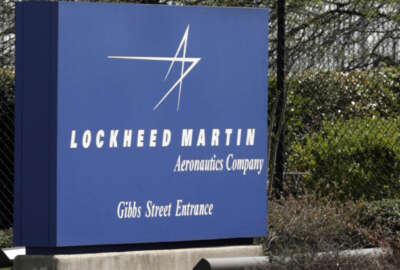
New DoD research policy gets glowers from industry
DoD is tightening the reins on the research money it gives out to companies. The Pentagon is receiving some backlash for it.
Industry has to do a little more work if it wants money from the Pentagon for research and development.
The Defense Department changed its policy on independent research and development (IRAD) last week, requiring companies to consult with the Pentagon about research done partly on the government’s dime.
DoD is also considering a new policy that will require contract officers to consider the use of IRAD in the final price of a contract when choosing a company for a contract.
The two policies are the culmination of a year-long battle between industry and Frank Kendall, the defense undersecretary for acquisition, technology and logistics.
Currently, the Pentagon funds defense companies for the research and development they do since some of the products those companies create only have one consumer, the government. At times, those products never translate into products that can be put on the market for private consumption.
However, the Pentagon is trying to crack down on industry’s use of public funds. DoD feels IRAD is used for near-term goals, like reducing the price on a competitive item, and not to actually create intellectual property. The Pentagon said there was a disconnect between what the government was expecting and what industry was providing.
“What I am looking for … is that there is some meaningful technical content in the award that’s been put out, that’s really the fundamental point,” Kendall said last fall. “By requiring industry to tell government what it’s doing will encourage more meaningful content.”
The policy change specifically dictates industry “engage in a technical interchange with a technical or operational DoD Government employee before IR&D costs are generated so that contractor plans and goals for IR&D projects benefit from the awareness of and feedback by a DoD government employee.”
Not everyone is thrilled with DoD’s changes.
Lexington Institute Vice President Dan Goure said requiring companies to report to DoD harms industry’s intellectual independence.
“Essentially, companies can’t do their own thing without in effect getting approval from the government, which totally wipes out the ‘independent’ in IRAD,” Goure said. “These two rules basically make it less likely that companies will spend the IRAD on really new and interesting things and increasingly IRAD will be spent where contracting officers or program managers think it should be spent, which is the wrong way to do it.”
Goure said the whole point of IRAD is to let industry research new and interesting things only the government would buy.
Goure said government oversight might compromise what industry invests in.
“Contract officers tend to be very conservative people,” Goure said. “The Department of Defense is notorious for either not seeing good ideas or being late to the game. If Steve Jobs had gone to the DoD with the iPhone or Mac Pro, they would have rejected it.”
Goure added that if contracting officers take into account IRAD spending in contracts, companies will be less likely to use that money for fear of losing a contract.
On the other hand, some experts side with DoD and think industry takes advantage of IRAD funds.
“It seems to me that what [is spent out of IRAD funding] in the name of research … is relatively small,” Subrata Ghoshroy, a former senior defense analyst at the Government Accountability Office, told Federal News Radio. “The science and technology is an area in my opinion where actual scientific research takes place. The rest of the budget is not really doing that much research. … It is any area where the corporations tend to make a lot more money by building prototypes and often they don’t go anywhere.”
In a 2011 article in the Bulletin of Atomic Scientists, Ghoshroy writes, “Congressional military committees have for years grossly abused the Defense R&D budget, using it to channel money to contractors in their districts via the earmarking process.”
The proposed policy on using IRAD for contract evaluations was originally sent out for public comment in February. During an industry day, companies and business groups told DoD the rule was too convoluted.
Comments on the new proposed rule are due by January of next year.
The fiscal environment
The IRAD policy changes come, in part, from a greater fiscal belt tightening across DoD.
DoD doesn’t have the funds to spend on innovation like it did during the Cold War and is relying more on industry.
Last November, Kendall told industry he’d like to see them make greater investments in innovation.
“Industry is doing a lot of stock buybacks, which I understand why they are doing it, that improves some financial metrics and so on, but I think a better investment for the long term is in technology for future products,” Kendall said.
DoD requested about $75 billion for research and development for fiscal 2016 — that’s about 12 percent of the entire defense budget. On the other hand, Wesley Bush, CEO of Northrop Grumman, said his company spent about 4 percent of its revenue on R&D this year.
That trend stays steady for most defense companies. Boeing spent a little over $3 billion in 2014 for R&D, about 3 percent of its total revenue, according to a report by AeroWeb, an aerospace and defense market company.
Similarly, Raytheon spent $500 million in 2014, only 2 percent of its total revenues.
A report by the Information Technology and Innovation Foundation found that R&D spending as a share of sales by defense contractors declined by nearly one-third between 1999 and 2012.
Non-government technology companies, by comparison, spend billions more and at a much higher percentage of their revenues on R&D. Apple spent $2 billion on R&D in the first quarter of 2015 alone. Samsung spent $13.4 billion in 2014 on R&D and Microsoft spent $10.4 billion.
Gwynne Shotwell, president and COO of SpaceX, said defense industry R&D spending is “incredibly low” and that a huge part of the reason defense companies have an innovation problem is because of the low funding.
Defense companies, however, say that the marketplace is different from the commercial marketplace.
“The investments required are very large and they are very long-term before you get a return,” Kendall said. “We buy in many cases very specialized, very complicated, very expensive products that take a long time to develop and we buy them in an environment in which the assurance that there’s going to be sales is kind of limited.”
Bush said private R&D is a very limited view of what defense companies do. He said Northrop Grumman’s scientists usually have no idea if the project they are working on will translate to the marketplace.
Bush said his company is making investments in products it will not commercialize and the moment it is commercialized it begins to “wash away” technological superiority.
That, however, does not take into account if companies later release technologies commercially once the technology gap has been closed by adversaries.
Copyright © 2025 Federal News Network. All rights reserved. This website is not intended for users located within the European Economic Area.
Scott Maucione is a defense reporter for Federal News Network and reports on human capital, workforce and the Defense Department at-large.
Follow @smaucioneWFED





